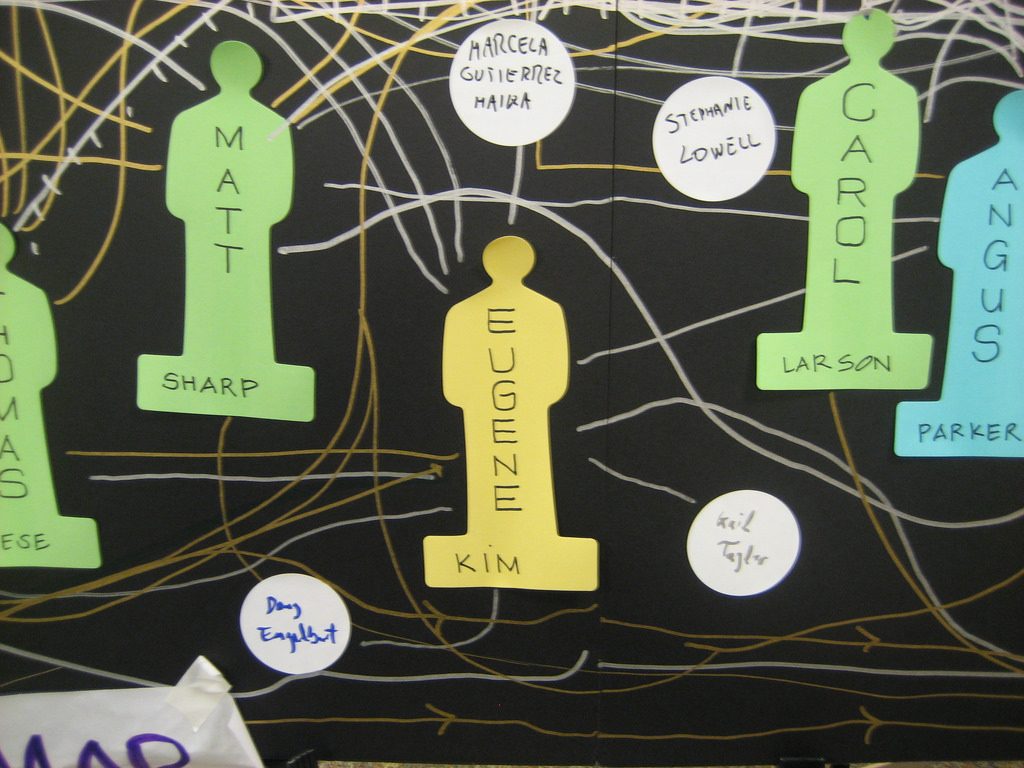“Data revealed that participants’ learning networks were based around both physically and emotionally close ties, which appeared the most homphilious with respect to occupation”(p.67)
As I prepare for a pre-conference workshop and conference workshop at the International Society for the Scholarship of Teaching and Learning 2016, I am reading about how university instructors learn about teaching through personal networks (sometimes referred to as “significant networks” or “social networks”). This work draws on Social Network Theory and is part of a research project I am collaborating on with Gary Poole and Roselynn Verwoord.
Today’s post is a summary of findings from the following paper:
Pataraia, N., Margaryan, A., Falconer, I., Littlejohn, A., & Falconer, J. (2013). Discovering academics’ key learning connections: An ego-centric network approach to analysing learning about teaching. Journal of Workplace Learning, 26(1), 56-72.
Below is a summary of the findings, as presented in the paper. Participants were 37 academics from UK-based universities.
The form of participants’ personal learning networks relating to teaching
- The highest percentage of connections that academics considered key to their learning and teaching were within their department and institution (56%).
- Participants used their network’s expertise, information, and guidance, to carry out work-related tasks and solve teaching-related problems. They reached out to people they perceived as being most helpful for addressing a given challenge/situation.
- The majority of participants emphasized that a good personal relationship was critical for establishing and maintaining learning connections.
- Most academics’ learning networks are comprised largely of other academics.
Homophily evident in participants’ networks relating to teaching
- In this study, homophily was not seen in terms of gender or experience level but it was seen in the type of profession. That is, academics’ networks were comprised mainly of other academics.
- Academics with more than 11 years of experience had colleagues of all ranks in their networks; however early- and mid- career academics mainly had colleagues who were at a higher rank than them (the authors refer to this as “hierarchical levels”).
Physical proximity
- Participants’ networks are largely made up of people who are physically proximate and within the organization.
Length of time known
- Academics’ networks were comprised of colleagues that individuals had known for periods of time ranging from short to long. As can be expected, the most experienced academics had the most diversity in their network with respect to the length of time they had known their colleagues.
- Academics interacted most often with strong-tie connections than with weak-tie connections. (For a brief introduction to the concept of strong and weak ties, see here).
Discussion section of paper – More take-aways
“Data revealed that participants’ learning networks were based around both physically and emotionally close ties, which appeared the most homphilious with respect to occupation” (p.67)
This suggests that creation of learning networks and maintenance is aided by:
– Physical proximity
– The strength of tie in terms of friendship
– Homophily of occupation
Participants (often) shared more than one type of relationship with their contacts (i.e., individuals in the network were both a professional acquaintance and friend).
“Despite the widespread popularisation of technologies, participants tended to favour face-to-face encounters for their learning, which occurred largely with their institutional colleagues.” (p.67)
Academics’ networks are diverse in terms of hierarchical position (compared to self) and length of time they had known their contacts. This type of diversity should be favourable for learning new teaching practices.
“Given that heterogeneity in the network structure was more visible among experienced participants, we may hypothesise that their networks stand a better chance of promoting serendipitous learning and innovation.” p.68
Recommendations for educational developers
- Help academics recognize value/potential of personal networks for learning about teaching
- Teach networking skills and raise awareness about importance of networks.
- Provide more opportunities for networking.




